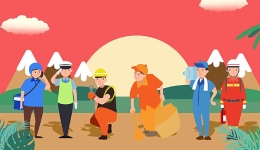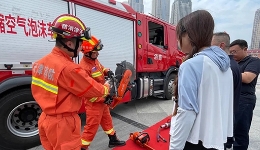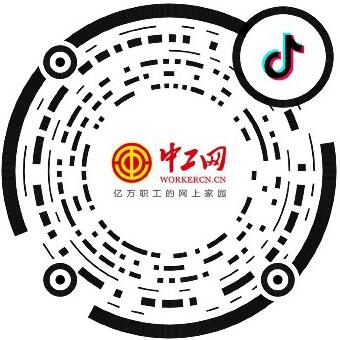Original title: Walking on the Snow covered Plateau, Witness the New Tibet -- Commemorating the 73rd Anniversary of the Peaceful Liberation of Tibet
Seventy three years of hard work has witnessed great changes in the snow covered plateau.
On May 23, 1951, the Agreement between the Central People's Government and the Tibetan Local Government on Measures for the Peaceful Liberation of Tibet (referred to as the "Seventeen Article Agreement") was signed, announcing the peaceful liberation of Tibet. Since then, the Tibetan people have forever shaken off the imperialist aggression and fetters and embarked on a bright road of unity, progress and development with the people of all ethnic groups in the country. This historical achievement, which will shine through the ages and benefit all generations, is worth remembering forever.
As journalists, we have seen from history that Tibet has carried out democratic reforms, that millions of serfs have been liberated, that the social system has achieved historical leaps, and that it has become prosperous and bright. Today, we are walking on the snow covered plateau to witness its ecological protection, poverty alleviation, national unity, and rural revitalization... What we have seen and heard is a new Tibet that has made all-round progress and historic achievements in various undertakings under the guidance of the Party's Tibet governance strategy in the new era.

The picture shows Gala Peach Blossom Village during Linzhi Peach Blossom Festival in 2023. Photographer: Wang Qian
Tibet's roads were described in the Tibet Chronicle published in 1930 as "crisscrossing rocks, people and roads, difficulties and dangers, and indescribable." Since the peaceful liberation, Tibet has gradually established a comprehensive three-dimensional transportation network covering roads, aviation, railways and other transportation modes. Relying on the "dividend" of transportation development, Tibet welcomes more opportunities for development.
Every March and April, a large number of tourists travel thousands of miles to see the spring scenery of Linzhi. Convenient transportation is the basis for better "bringing in" tourists. The Lalin section of the Sichuan Tibet Railway was put into operation, and the Plateau Revival Station on the Lalin Railway welcomed tourists, adding impetus to Linzhi's tourism industry; Milin Airport is increasingly crowded with more than 10 routes to more than 10 cities, including Beijing, Chengdu, Chongqing and Guangzhou; In addition, self driving the Sichuan Tibet line is the first choice for many tourists. You can also choose to take the Qinghai Tibet line to experience different scenery, and it only takes 4 hours to drive on Linzhi Lajiang Expressway... At the same time, the huge business opportunities contained in the Linzhi Peach Blossom Festival are further promoting the upgrading of the tourism industry.
When we walked in Tibet, what we recorded with pen and camera was not only the magnificent scenery of the plateau, the ancient brilliance of historical precipitation, and the colorful ethnic customs, but also the peach blossoms that paved the way to prosperity in the countryside, drawing a beautiful picture of the integration of ecological and modern flavor, and the harmonious coexistence of human and nature.

The picture shows the students of Xichang Primary School in Suo County, Naqu City raising their hands to answer questions in class. Photograph: Wu Jianying
In old Tibet, there was no school in the modern sense. The enrollment rate of school-age children was less than 2%, and the illiteracy rate was more than 95%. Today, Tibet has established a 15 year public education policy system, and has raised the "three guarantees" standard for education 21 times. The consolidation rate of compulsory education has reached 97.73%.
In Suoxian County, Naqu City, the classroom of Xichang Primary School on the Nujiang River was filled with sounds of reading, and the Zhamu Nian in the interest class was filled with moving melody. On Sunday afternoon, villagers who came to see their children off to school arrived one after another with cars and motorcycles. Ding Zengloxi, a villager from Parshaw Village, helped his daughters carry their luggage to the school gate. He said: "Three of the five children live on campus, and they don't have to pay a penny. All of them are borne by the state. Children like to come to school." The son of Luojia, the village branch, was admitted to the Tibet Tibetan Medical University, and his daughter's certificates were pasted on half of the wall. He proudly said: "We encourage all things to learn."
When we walked in Tibet, we recorded with pen and camera not only the teachers and students on campus and the teaching environment, but also the real sense of gain and happiness brought to the people by the educational development in Tibet. It is every inch of the land where knowledge and modern civilization are arriving in the motherland!

The picture shows the green forest along Yajiang River in Shannan City Photographer: Wang Qian
Tibet is an important national ecological security barrier. Protecting the ecology of the Qinghai Tibet Plateau is the greatest contribution to the survival and development of the Chinese nation.
In the former Shannan Zhabao County, wasteland and sandstorm have always troubled the production and life of local people. Ma Weihong, one of the third and fourth groups of Tibetan aid cadres in Beijing, recalled that when he first went to Langsai Ridge, Zhabao County, in 2001, "the sandstorm was very heavy, and the black windbreaker I was wearing blew a layer of sand, and the clothes were almost gray."
After decades of unremitting efforts, Shannan City has built a "Green Great Wall" on both sides of the Yarlung Zangbo River (Gongga County to Sangri County), which is 600 meters to 1500 meters wide, 160 kilometers long and has a total area of about 150 square kilometers, becoming a national comprehensive demonstration area for desertification prevention and control. During the period of sand prevention and control, Shannan City adhered to green development, cultivated a resource base of psammophytes in the desert area, and initially formed a characteristic industry focusing on afforestation, fodder, traditional Chinese medicine, economic forest fruits, and desert tourism. Ma Weihong said, "Now, when we go back, Langsai Ridge has become an oasis of rice."
When we walked in Tibet, what we recorded with pen and camera was not only the antelope running under the railway bridge, but also the wild animals occasionally intruding into mountain villages, the area of urban green space and parks increased, and the lush green mountains and green waters. What's more, the Central Committee of the Communist Party of China attached great importance to the construction of ecological civilization, and the ecological environment of the Qinghai Tibet Plateau was better, so that the people really enjoyed the dividends of ecological civilization construction and development, Live happily and fully!

The picture is provided by Pantao Nimu County planted in Nimu County
Before the peaceful liberation, more than 90% of the people in Tibet did not have their own houses and lived a life of scanty clothing and food. In the new era, Tibet's economic and social development is at a new historical starting point.
Wei Jianhua, the fourth group of Tibetan aid cadres in Beijing, served as the deputy county head of Nimu County in Lhasa 20 years ago, and later transferred to Tibet. He has experienced policy opportunities such as the western development, poverty alleviation, and rural revitalization, and has witnessed the growing improvement of Tibet's infrastructure and the leap forward development of its economy and society. He said, "When I first arrived in Nimu, there was only a north-south road of more than 200 meters, and an east-west road of more than 100 meters, in the shape of a 'D'. There was also frequent power and water cuts in the city. There were only a few kinds of vegetables in the grocery store, and few kinds of fruits. There were only a few small supermarkets, restaurants, and tea houses on the street, There are many shops on the street. Pinggu Peach was successfully introduced. There are more than 100 greenhouses in Tunmi Modern Agricultural Park. There are rich varieties of edible fungi, cucumbers, pumpkins, etc. The successful planting of cherries and strawberries has enriched the masses' table and driven farmers' income.
As we walked in Tibet, what we recorded with pen and camera is not only the abundance of dishes and food on the people's table in rows of ecologically civilized well-off villages, but also under the strong leadership of the CPC Central Committee and the strong support of the people all over the country, the cadres and the masses of all ethnic groups in Tibet worked hard and tenaciously, the social system achieved a historic leap, and the economy and society achieved all-round development, People's lives have been greatly improved, and urban and rural areas are not what they used to be!
We have always been observing with camera and recording with notes in our hands, witnessing that under the leadership of the Communist Party of China, Tibetan history is constantly writing new chapters, and firmly believe that Tibet will have a better tomorrow. (China Tibet Website/Wang Qian)

















